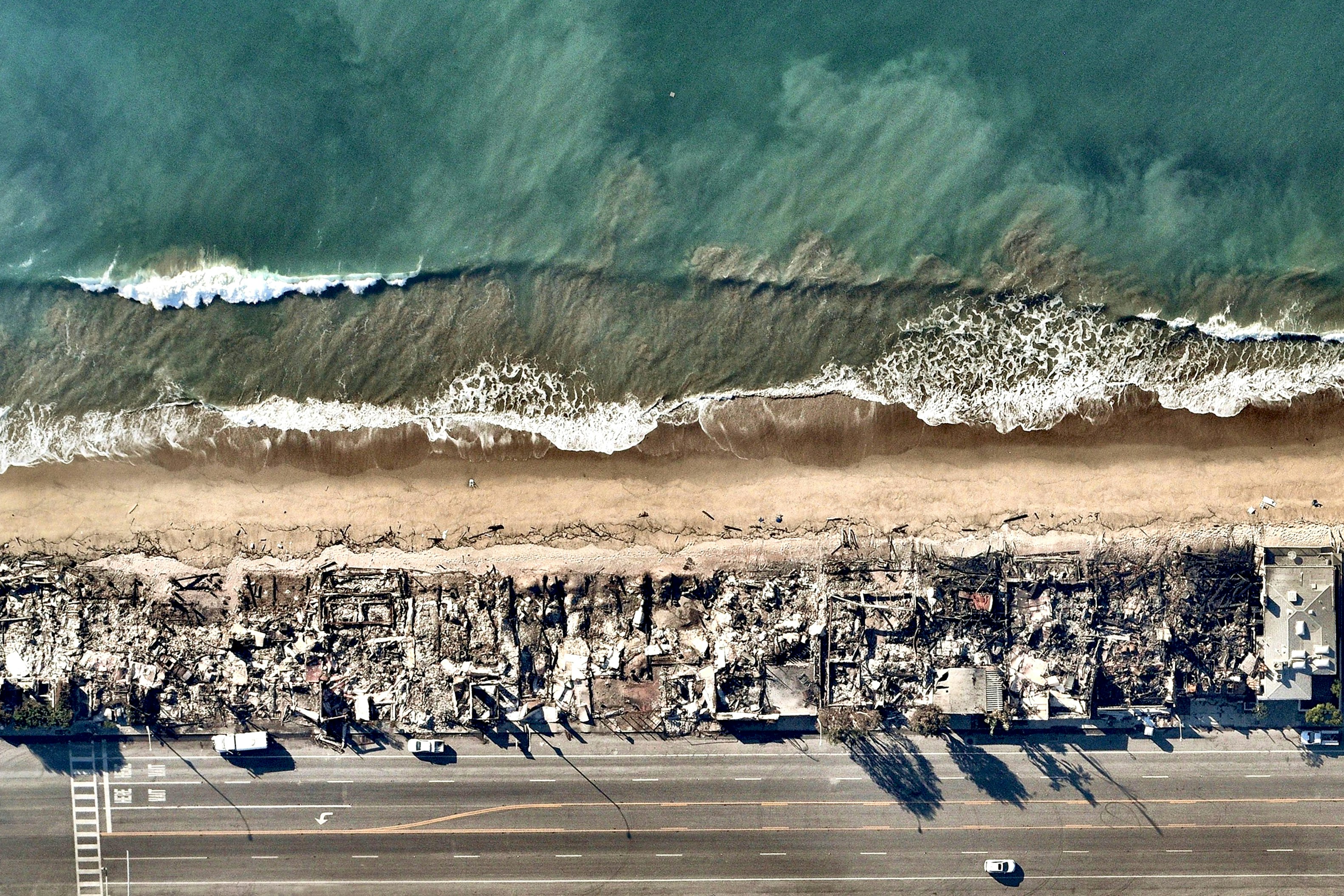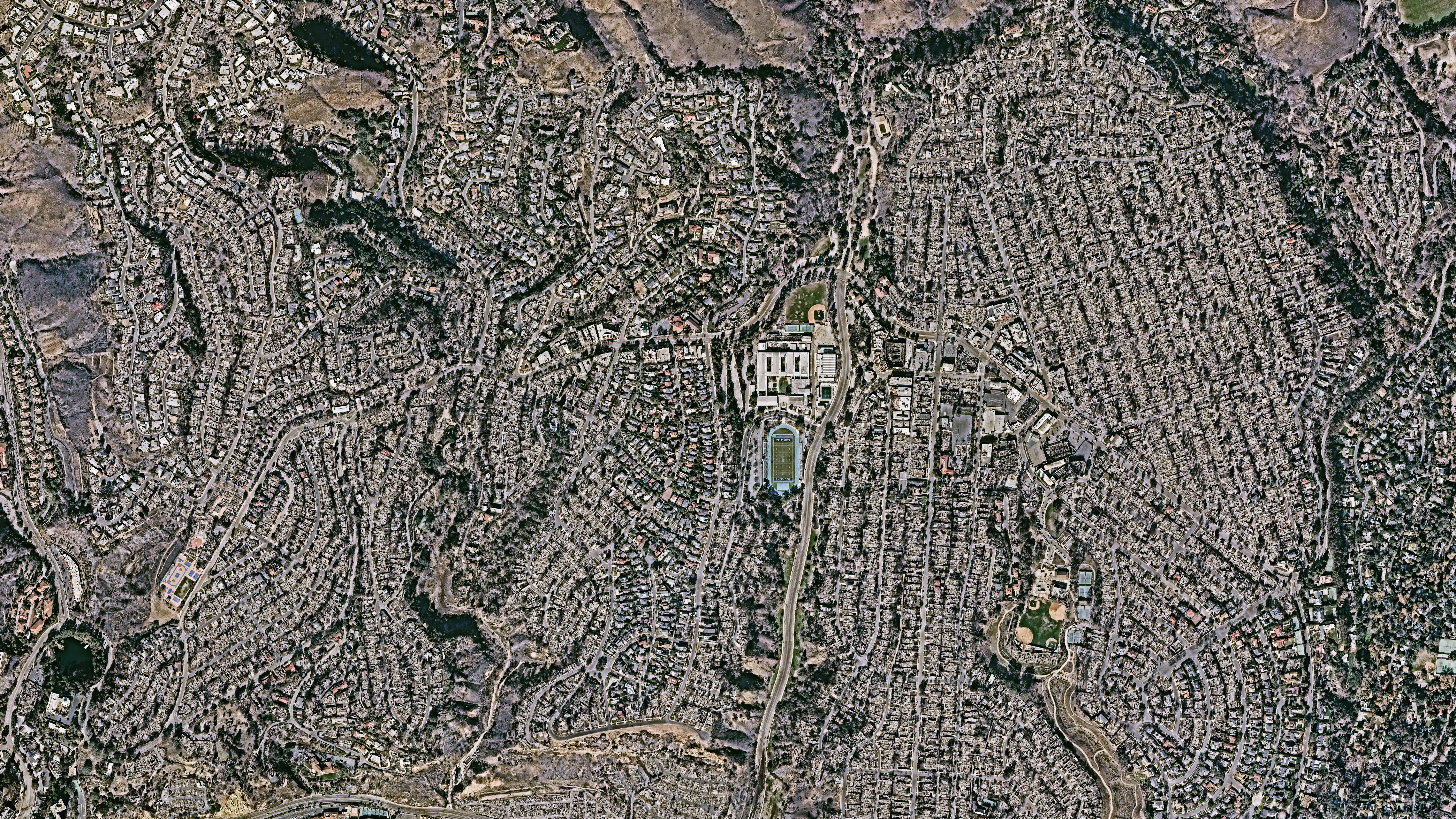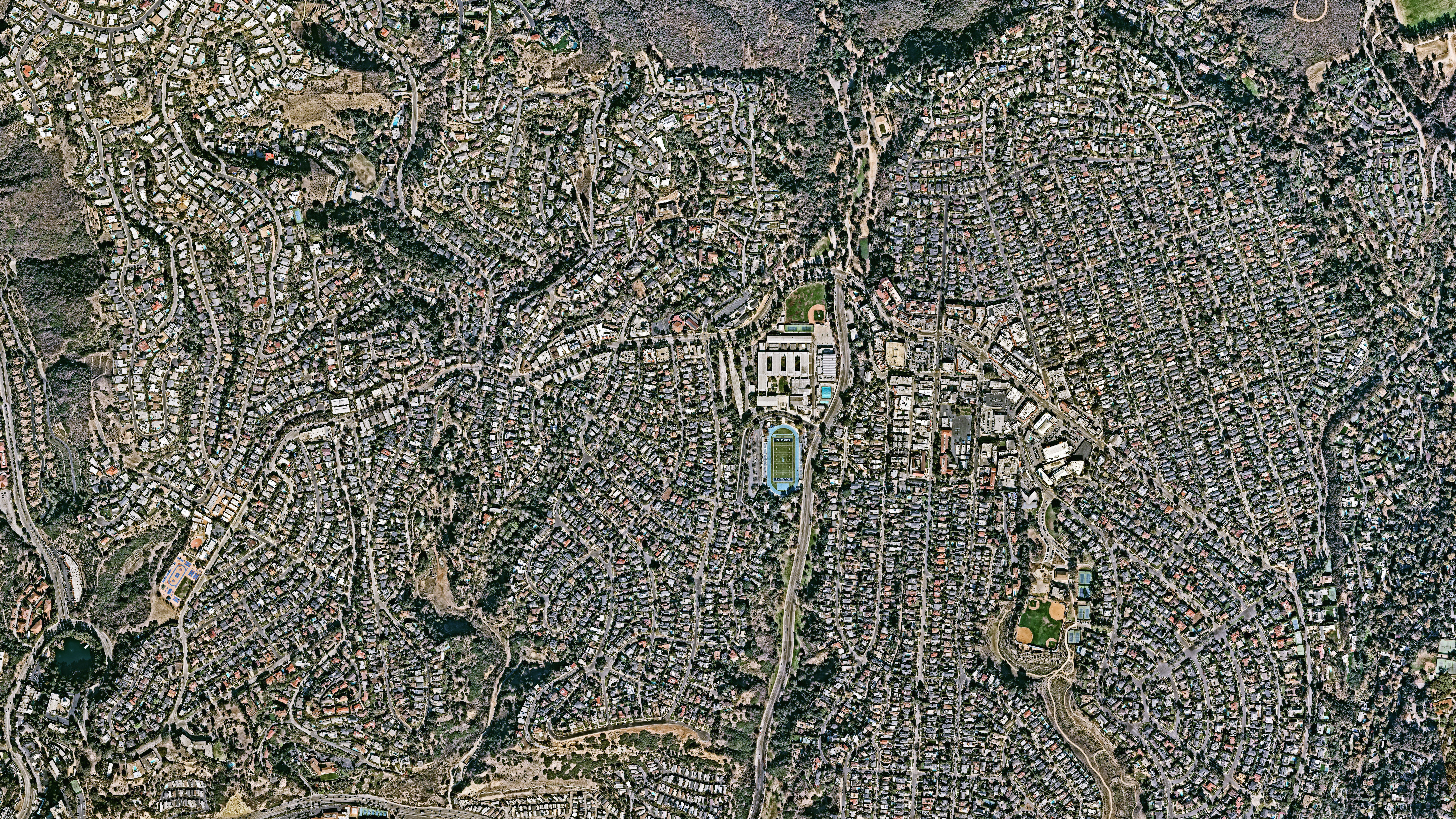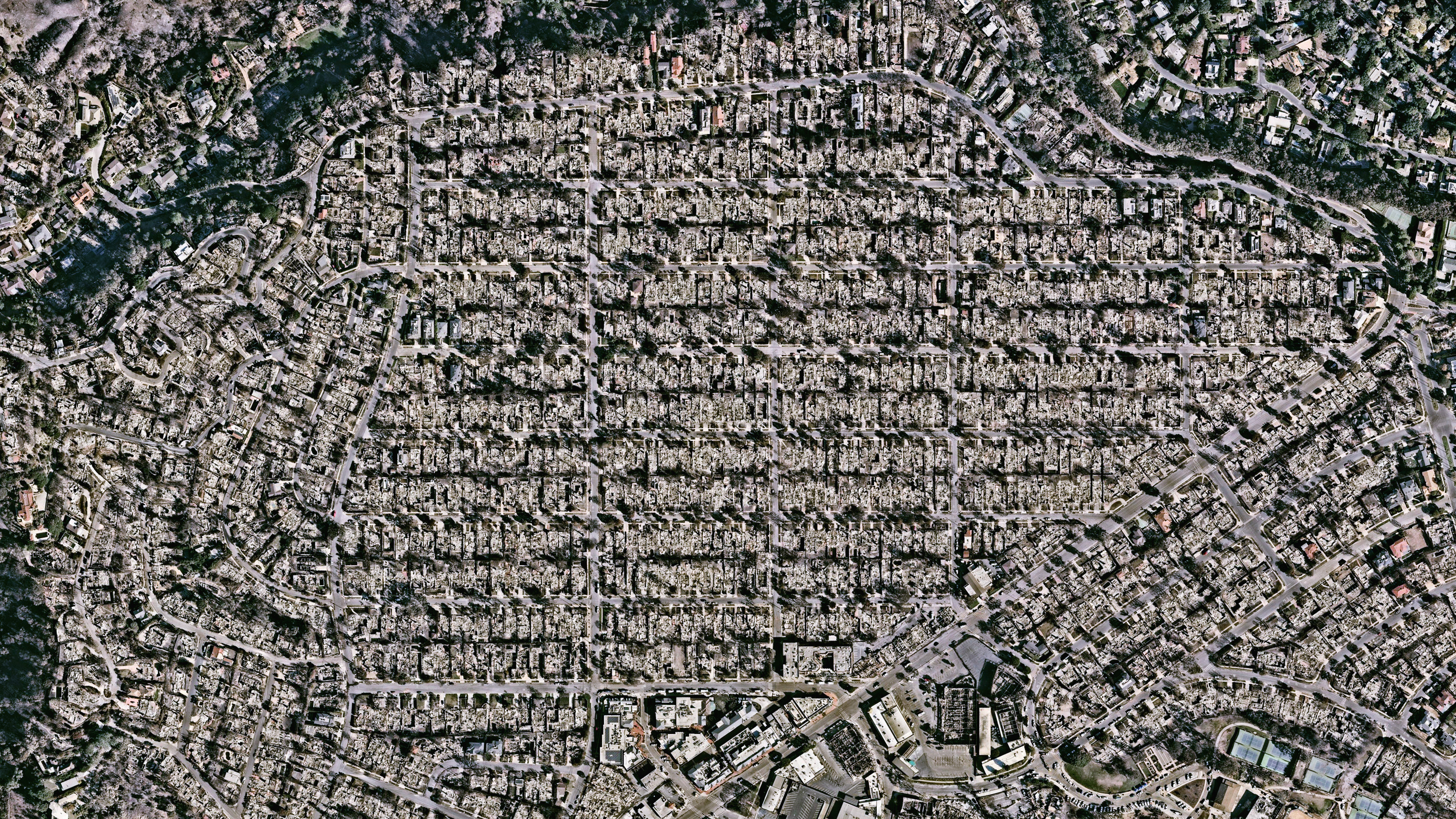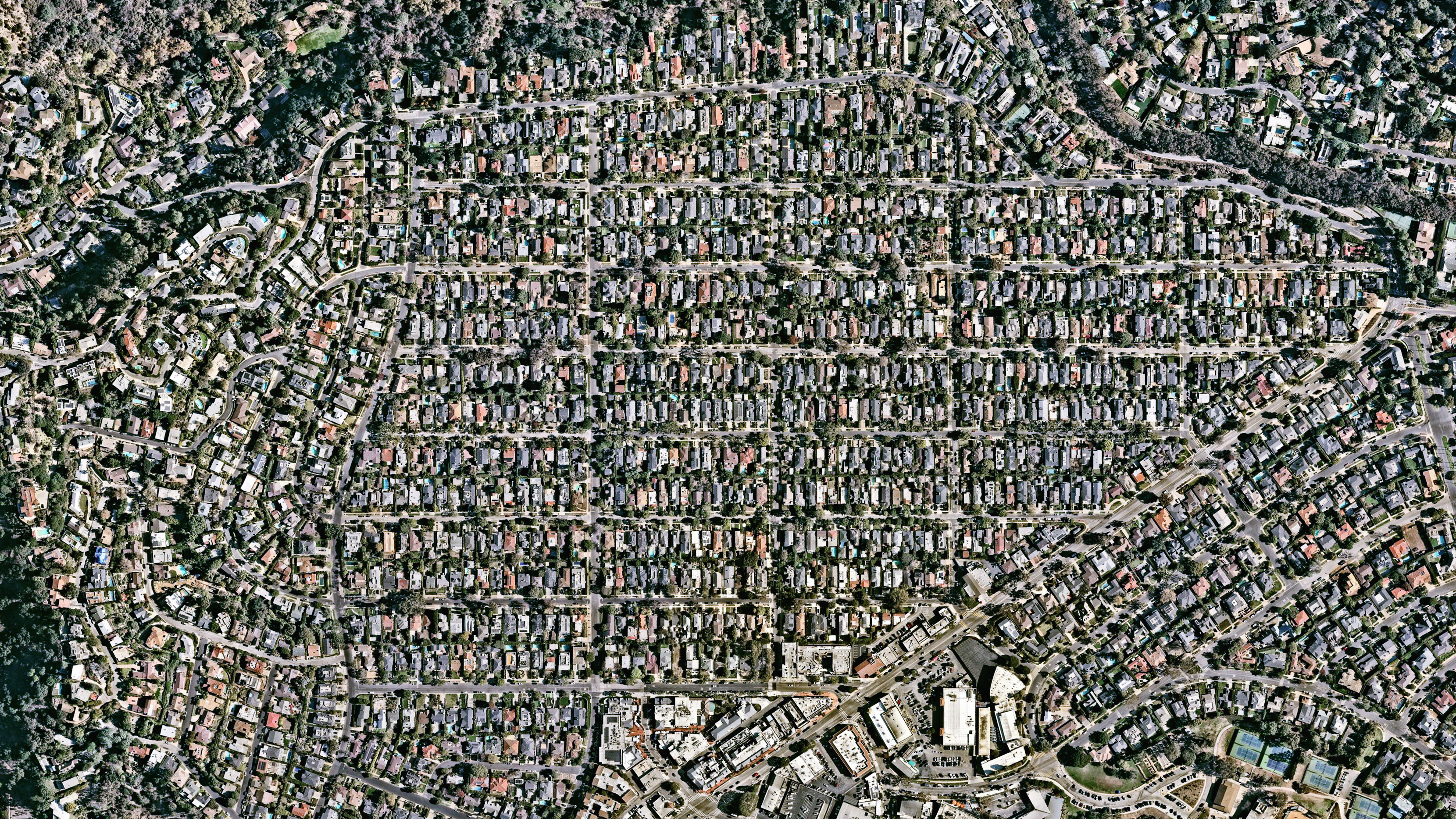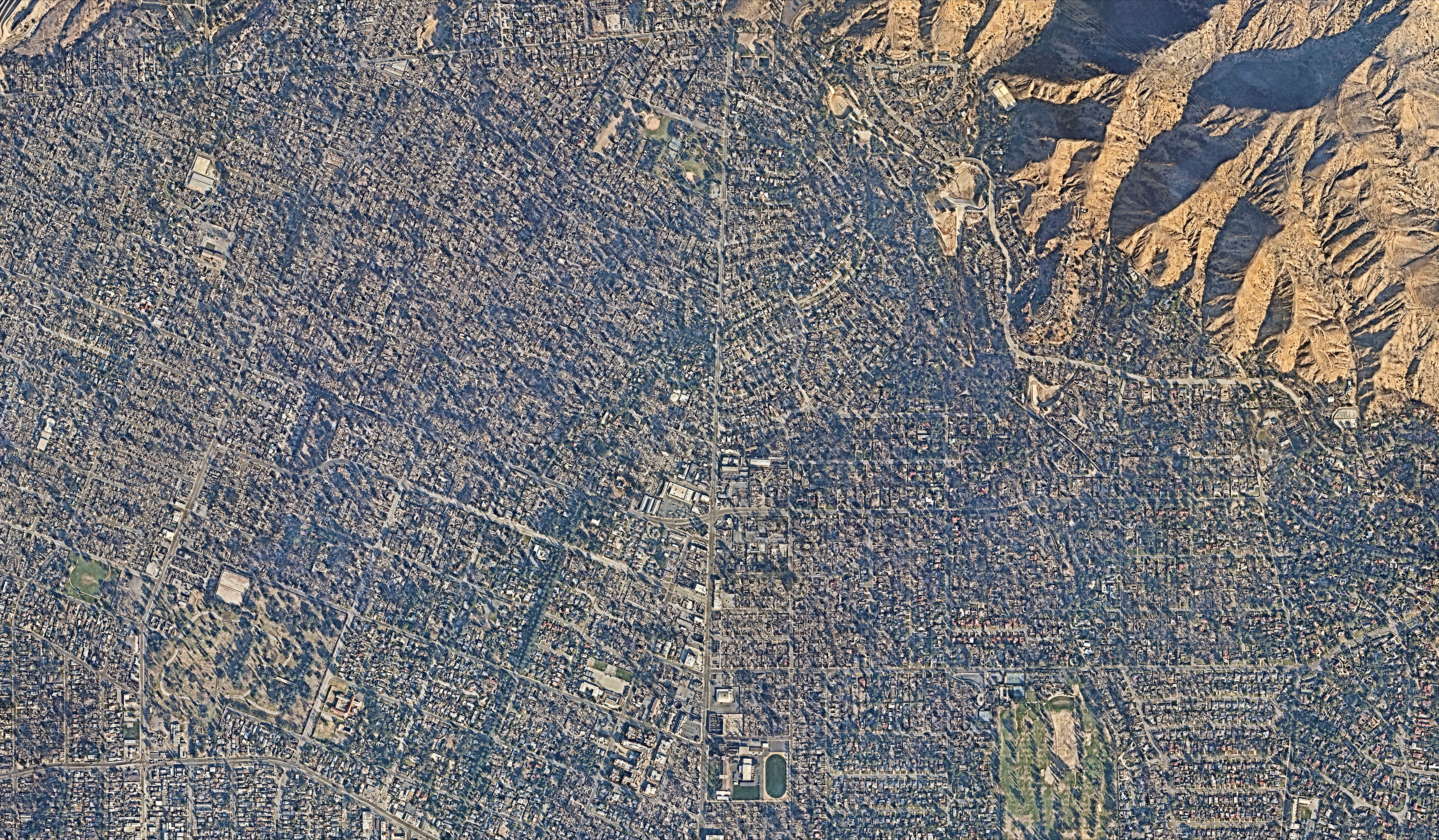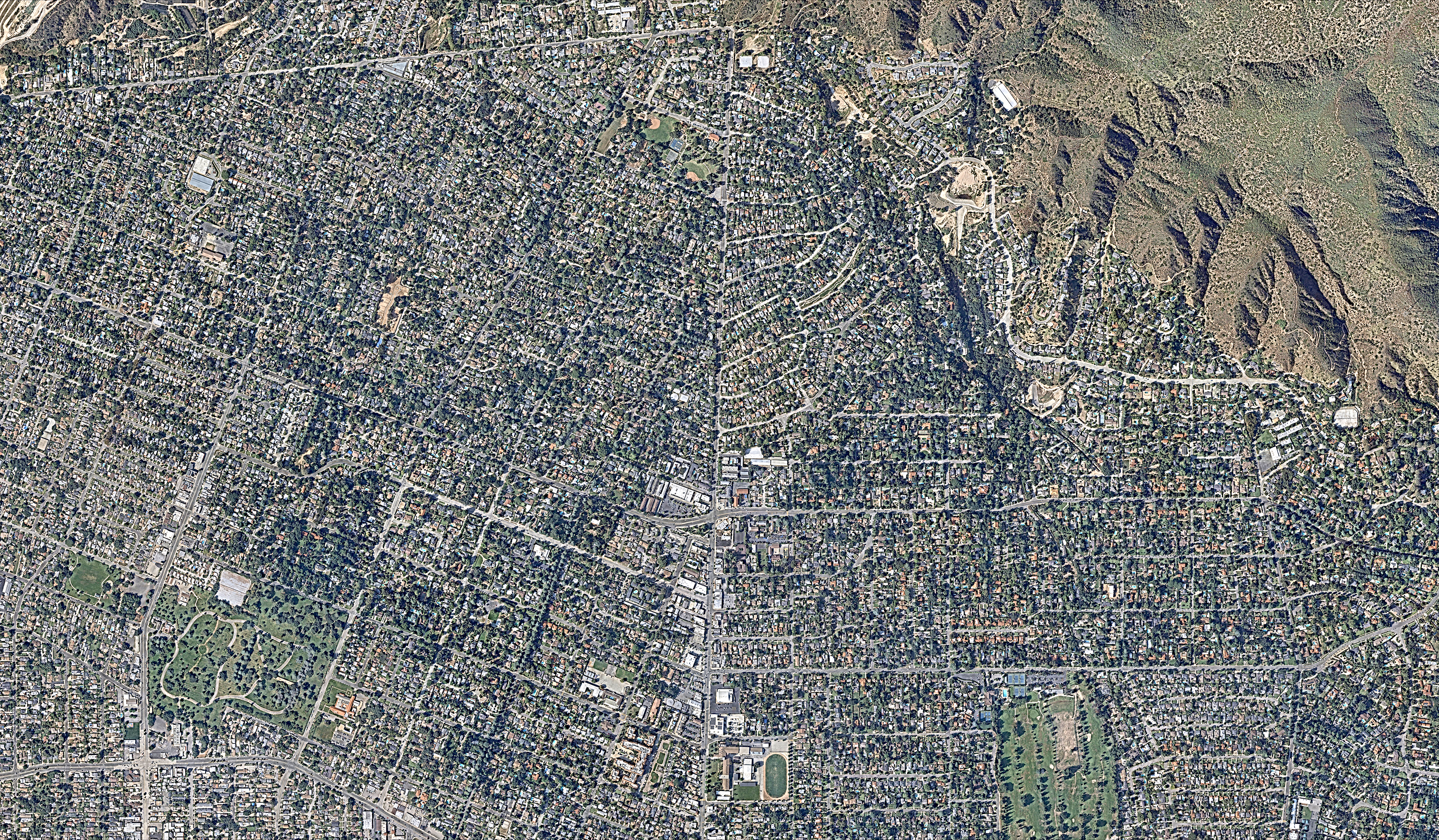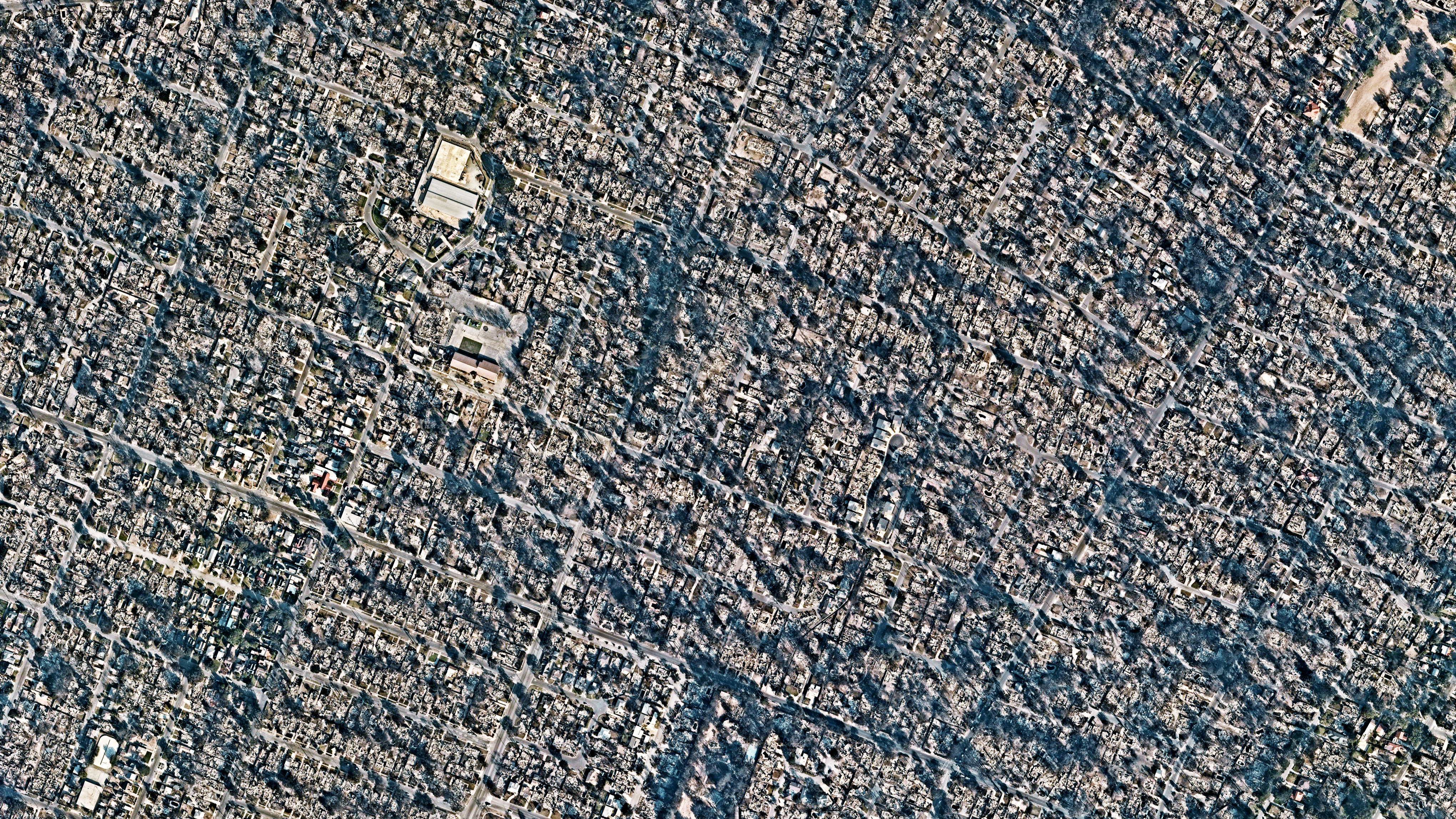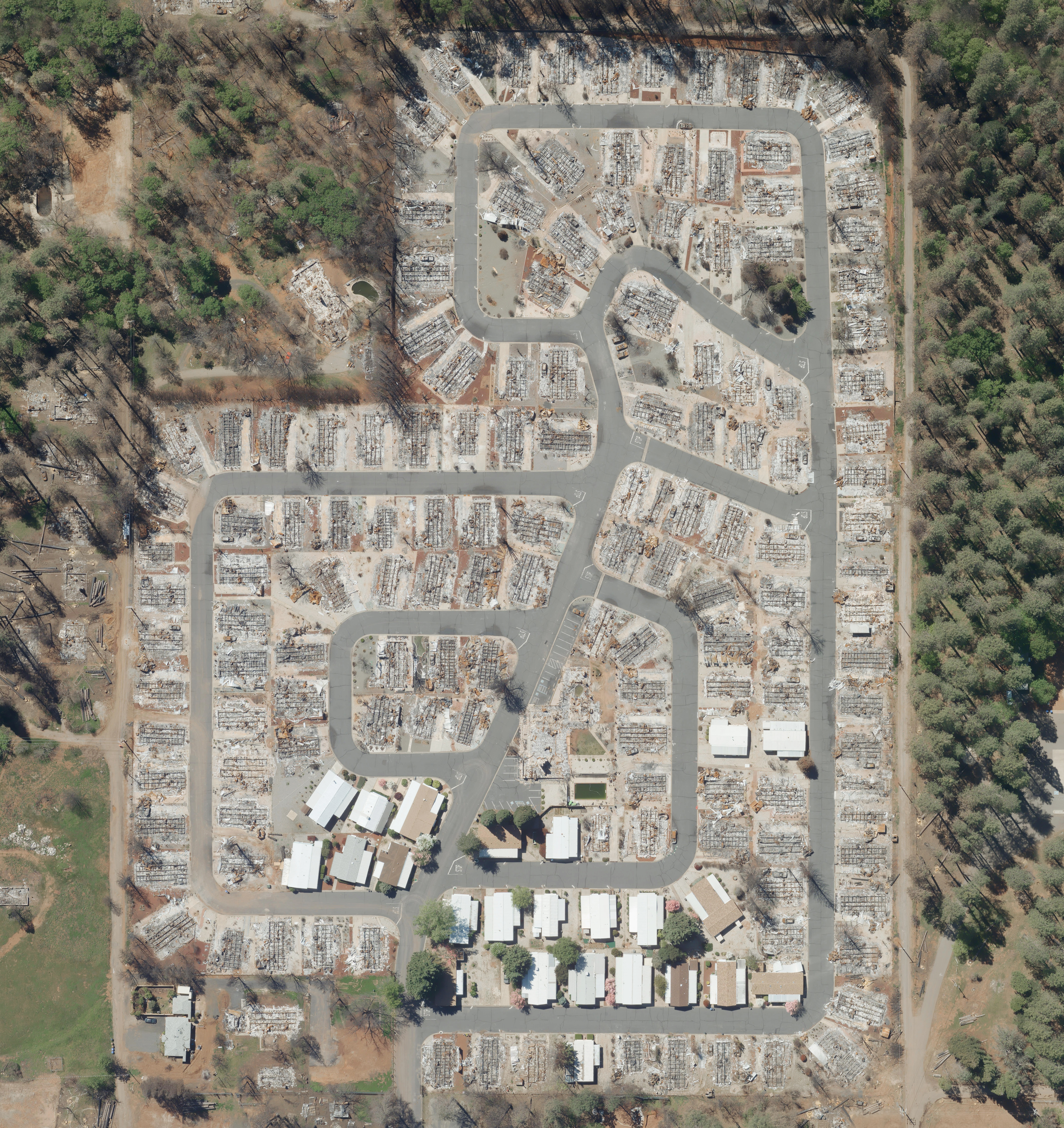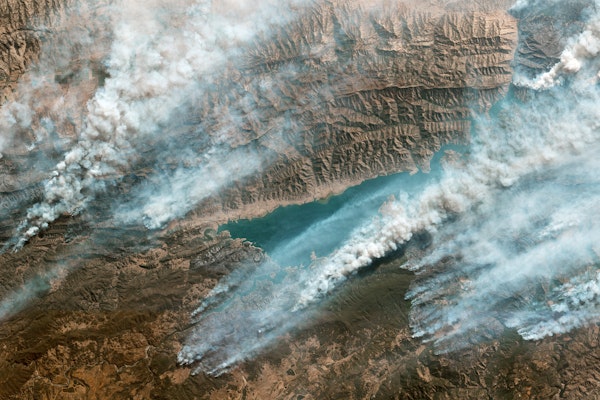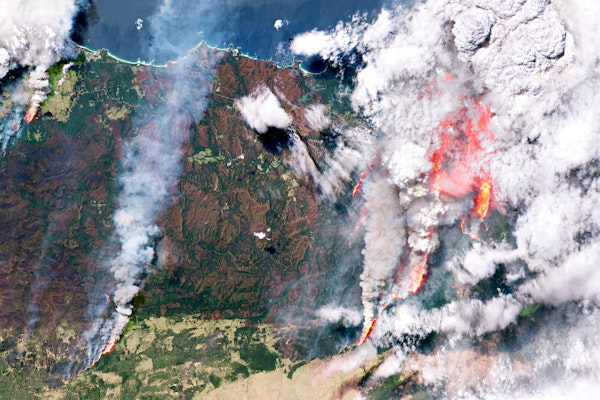My work with Daily Overview over the past decade and my subsequent immersion in climate change research did, in some way, help me process what took place this past week. One book in particular, The Uninhabitable Earth by David Wallace-Wells, has a chapter about wildfires that has shaped how I think about these blazes in our modern world. In it, he stressed that today’s fires are a different beast:
"The fires we are seeing today are not like those of the past—not just bigger or more frequent, but of a different kind entirely, raging with a heat and intensity that often makes them impossible to contain."
Taking the longer view, he made it clear that each and every fire—whether or not they burn a forest or a home—adds fuel to the already perilous crisis we’re in:
"Each year, the fires burn bigger and hotter, releasing more carbon into the atmosphere, which in turn makes future fires even more intense, feeding the cycle of devastation."
Lastly, he shared some staggering statistics about the behavior of these new fires, that make the hair on your arm stand up when you begin to imagine what it is like to find yourself in or near one of these events. When describing the Camp Fire of 2018, which destroyed Paradise, California, and killed 85 people, he notes:
"The fire moved at a speed of eighty football fields a minute."
The flames ripping through Paradise, CA, were moving at roughly 273 miles per hour. That’s faster than most commercial airplanes at takeoff — truly inescapable. I haven’t seen speed estimates for the Palisades or Eaton fires yet, but I have seen footage from doorbell cameras on homes that make it clear how shockingly fast these fires went from spark to serious problem.
